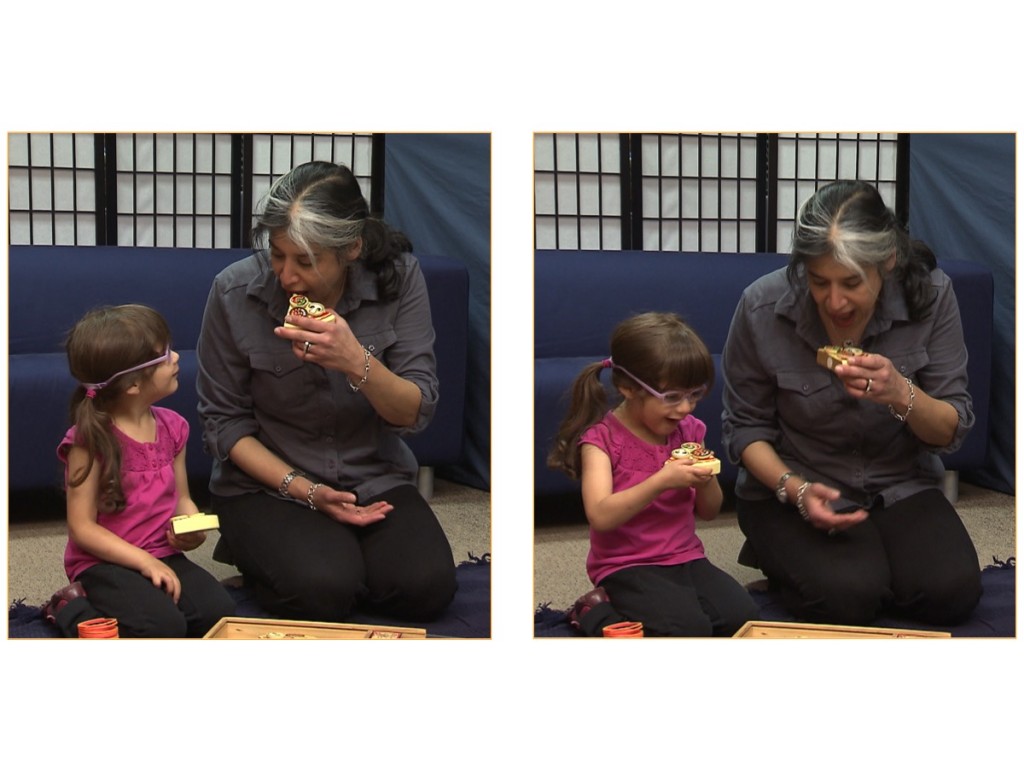
Before infants can talk they also tell us a lot about what they know through imitation. Imitation is the ability to learn behaviors by observing other people’s actions. It is a social game that children love to play. It’s also an important way for infants to learn about everything from how a toy works to social norms, like how to behave in a library.
Children learn through imitation well beyond infancy. In the photos, a 3-year-old watches as her mother pretends to take a bite out of a piece of play pizza. The child then imitates the same action. Through imitation, children make a connection with their social partners. They learn that others are “like them.”
Imitation is a key part of early interactions because it allows children to coordinate actions with another person. Young children are more likely to imitate adults who are emotionally available. They can signal this with eye contact, a welcoming facial expression, and by responding to the child’s actions.
-
- Back-and-forth or contingent interactions
- exchanges in which a caregiver times their responses to a child’s behavior
- Imitation
- observing then reproducing, or copying, a behavior
- Infant-directed speech
- a special tone and style of speech used to talk to young children. It’s also called parentese.
- Scaffolding
- the support a caregiver provides a child to help them achieve more than they would be able to accomplish on their own